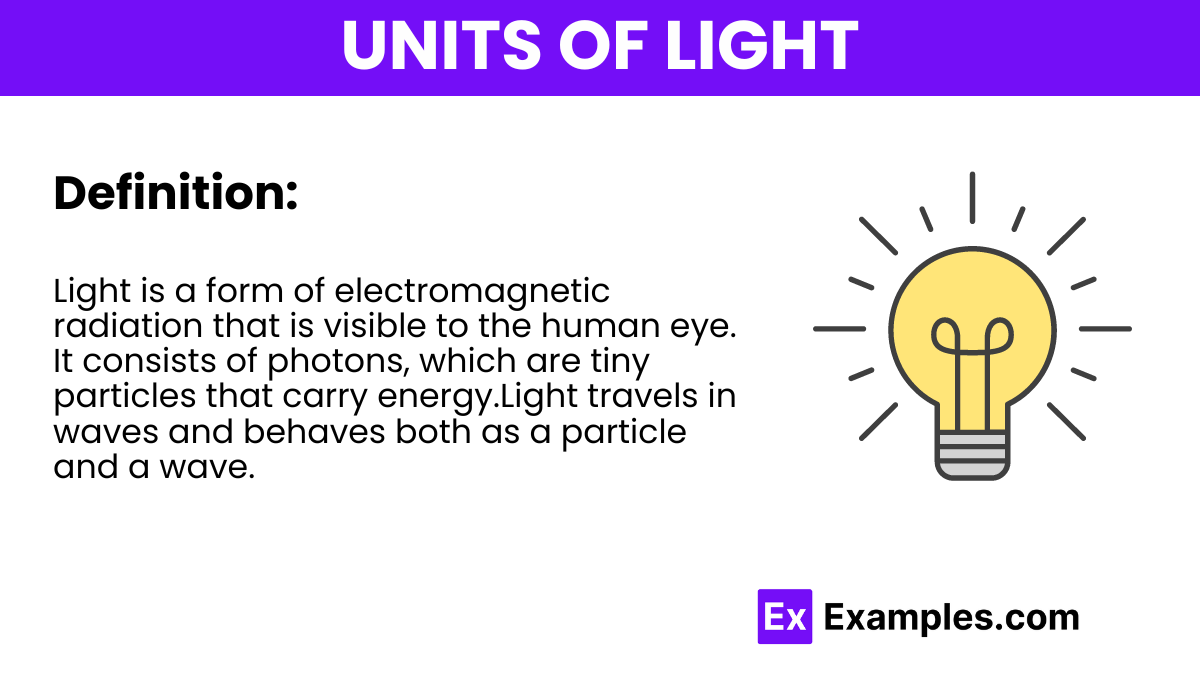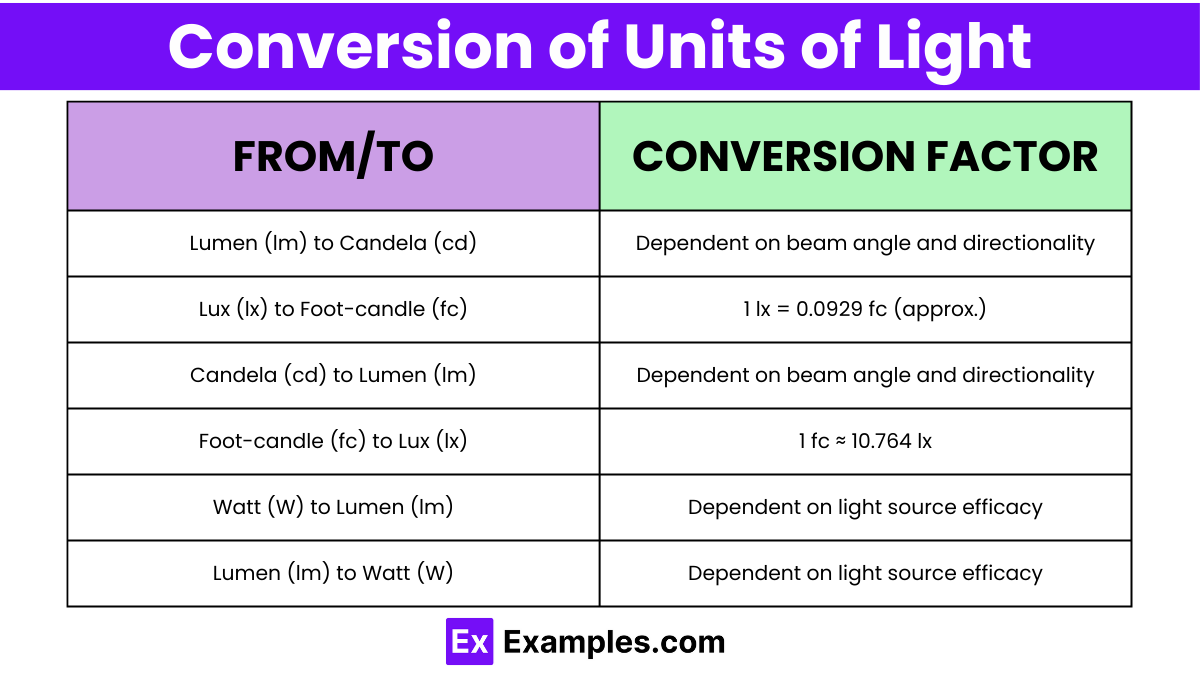Which of the following units is used to measure the power of light?
Lumen
Candela
Lux
Watt


Units of light measurement include:
Lumen (lm): Measures the total amount of visible light emitted by a source, as perceived by the human eye.
Lux (lx): Measures the illuminance or brightness of light falling on a surface per unit area.
Candela (cd): Measures the luminous intensity of a light source in a particular direction.
Foot-candle (fc): Similar to lux, it measures illuminance, commonly used in the United States.
Watt (W): Measures the power consumed by a light source, which indirectly affects its brightness.
Light is measured using various units that quantify different aspects of its characteristics. One key metric is luminous flux, which represents the total amount of visible light emitted by a source and is measured in lumens (lm). Another important aspect is illuminance, which refers to the intensity of light falling on a surface and is measured in lux (lx). Additionally, luminous intensity measures the brightness of a light source in a specific direction and is expressed in candela (cd). These units enable accurate measurement and comparison of light sources, aiding in tasks such as lighting design, architectural planning, and photography.
In practical applications, light measurement involves using devices such as light meters or photometers to quantify luminous flux, illuminance, and luminous intensity. These devices typically utilize sensors that respond to light in the visible spectrum, providing readings in the corresponding units. By measuring and analyzing light levels, professionals can ensure optimal lighting conditions for various settings, including indoor and outdoor environments, workplaces, and recreational spaces, ultimately enhancing visual comfort, productivity, and safety.
| Unit | Symbol |
|---|---|
| Lumen | lm |
| Lux | lx |
| Candela | cd |
| Foot-candle | fc |
| Watt | W |

| From (Unit) | To (Unit) | Conversion Factor |
|---|---|---|
| Lumen (lm) | Candela (cd) | Dependent on beam angle and directionality |
| Lux (lx) | Foot-candle (fc) | 1 lx = 0.0929 fc (approx.) |
| Candela (cd) | Lumen (lm) | Dependent on beam angle and directionality |
| Foot-candle (fc) | Lux (lx) | 1 fc ≈ 10.764 lx |
| Watt (W) | Lumen (lm) | Dependent on light source efficacy |
| Lumen (lm) | Watt (W) | Dependent on light source efficacy |
The conversion depends on the beam angle and directionality of the light source. It requires knowledge of the luminous intensity distribution.
1 lux is approximately equal to 0.0929 foot-candles. This conversion factor allows for transforming illuminance measurements between metric (lux) and imperial (foot-candle) units.
The conversion depends on the beam angle and directionality of the light source. It involves calculating the total luminous flux emitted in all directions.
1 foot-candle is approximately equal to 10.764 lux. This conversion factor facilitates transforming illuminance measurements between imperial (foot-candle) and metric (lux) units.
The conversion depends on the efficacy of the light source, typically expressed in lumens per watt (lm/W). Higher efficacy light sources produce more lumens per watt.
The conversion depends on the efficacy of the light source, typically expressed in lumens per watt (lm/W). It involves dividing the total luminous flux (in lumens) by the efficacy to determine the power consumption (in watts).
The largest unit of light is the Watt (W), which measures the power consumed by a light source, indirectly indicating its brightness and intensity.
Light units are calculated using specific formulas and conversion factors, such as the Planck-Einstein relation for photon energy and Lux to Lumens conversion for illuminance.
Text prompt
Add Tone
10 Examples of Public speaking
20 Examples of Gas lighting
Which of the following units is used to measure the power of light?
Lumen
Candela
Lux
Watt
What is the unit of measurement for the perceived brightness of a light source as seen by the human eye?
Candela
Lumen
Lux
Watt
A light bulb emits 800 lumens of light. What is the illuminance on a surface 2 meters away, assuming the light is evenly distributed?
50 lux
100 lux
200 lux
400 lux
A light source has a luminous intensity of 200 candelas. What is the luminous flux in a solid angle of 1 steradian?
100 lm
200 lm
300 lm
400 lm
Which unit would you use to describe the output of a light bulb?
Lux
Candela
Lumen
Watt
What is the unit of measurement for the amount of light energy emitted per second?
Lux
Candela
Lumen
Watt
Which of the following units is NOT used to measure light?
Lux
Candela
Lumen
Ampere
What unit is used to measure the luminous efficacy of a light source?
Lux
Candela
Lumen per watt
Watt
Which unit is used to measure the illuminance on a surface?
Lux
Candela
Lumen
Watt
What unit is used to describe the light output of an LED?
Lux
Candela
Lumen
Watt
Before you leave, take our quick quiz to enhance your learning!

